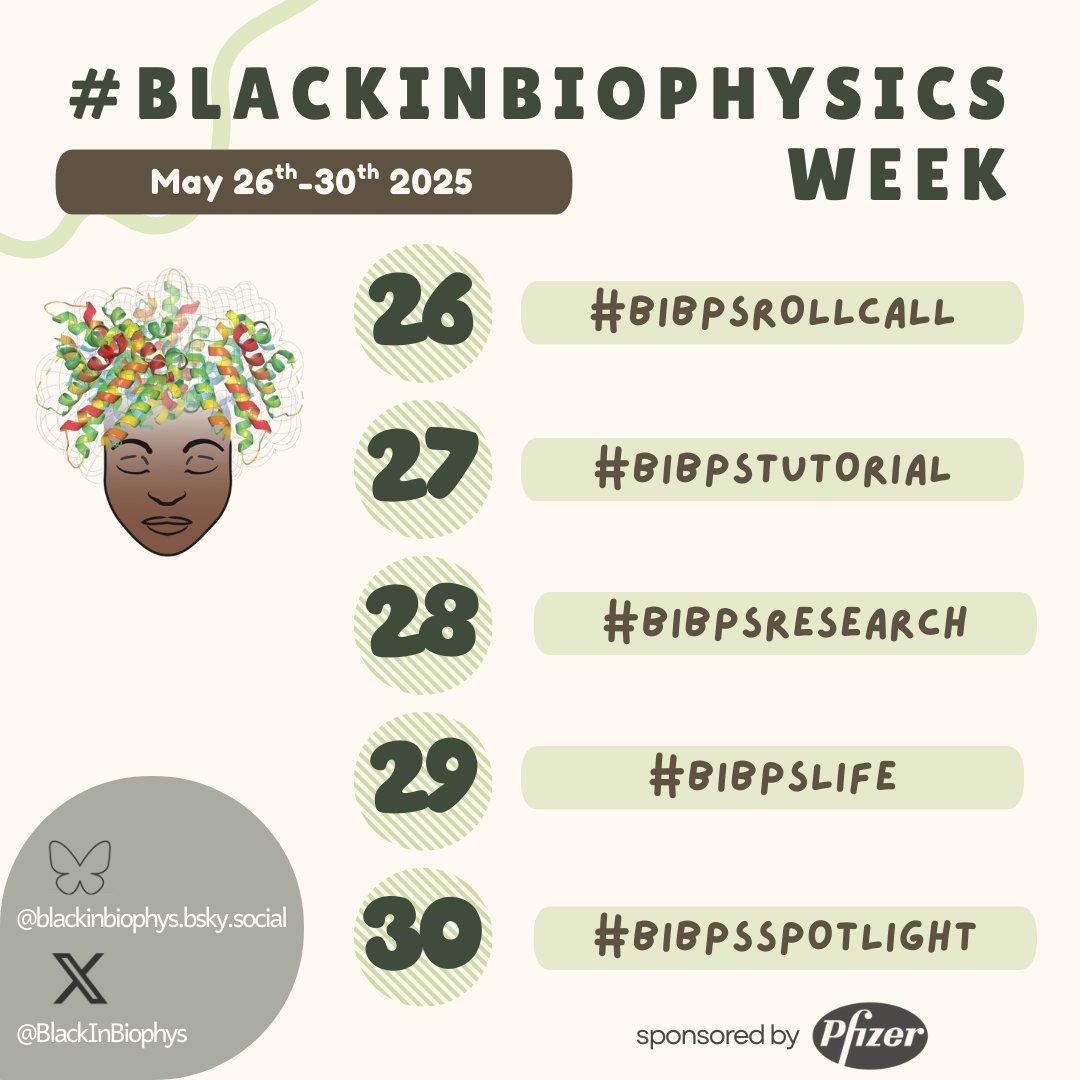
Biophysics Colab
@BiophysicsColab
Followers
1K
Following
581
Media
31
Statuses
552
An equitable, inclusive and transparent alternative to traditional science publishing
Joined April 2021
We are delighted to announce that Dr. Jessica Caldwell @JLCaldwellPhD has received the 2025 SGP Excelsior Award! Dr. Caldwell vividly exemplifies the mission of our Society and the future of physiology and biophysics. Learn more https://t.co/Jwyhaqht1p.
1
2
10
Announcing the new SGP Rising Star Travel Awards for students and postdocs. The $500 awards can be used for meetings held up to 1 year from notification. Apply today! Deadline: 1 August 2025 https://t.co/Ha585KTLQn
0
7
6
We are excited to share our EVENTS for #BlackInBiophysicsWeek 2025!!! We will be host #BIBPSWeek from Monday, 5/26 to Friday 5/30. RT and help us spread the word! A thread of Events below #BIBPS25
#BlackInBiophysics
@BiophysicalSoc
@blackinxnetwork
@EEJustLSSociety
1
16
16
"The traditional academic publishing system evolved in an era of printing presses and cadence-based journals. The Publish Review Curate (PRC) model offers a way to finally drag this system into the age of an open, collaborative, real-time Internet." https://t.co/avo22R0FAq
0
1
3
"The answer is to fix peer review so it meets the needs of modern science, not to scrap it entirely or pretend it can work ad hoc in the comments section of a preprint." https://t.co/6BHxJRyvDB via @scholarlykitchn
scholarlykitchen.sspnet.org
Science is built on a foundation of rigor and credibility. Preprints are adding to the crumbling of that foundation, which is already under attack by anti-science political agendas.
0
1
3
Using the well-established pump-leak model for osmotic water transport, they further show that the timescale at which a water buffer could maintain a modest 10% osmolality differential across the membrane is at most one minute for a typical animal cell. 3/3
0
0
1
The authors argue that, although such a buffer could temporarily maintain a transmembrane osmolality differential, this differential would drive water across the membrane to reach a steady-state in which osmolality within the cell equals osmolality outside the cell. 2/3
1
0
1
Here's our final evaluation of the #preprint by @AlanRKay and @s_aminzare from @uiowa: Kay and Aminzare discuss a claim made in a prior publication that macromolecular condensation acts as a water buffering mechanism in cells to compensate for the effects of osmotic shock. 1/3
This #preprint by @AlanRKay from @uiowa has recently been reviewed by @BiophysicsColab You can read the report by clicking on 'TRiP Peer Reviews' in bioRxiv: https://t.co/OlvBNDi2Yo
1
1
2
To this end, we are proud to announce that our 4th #BlackInBiophysicsWeek is COMING SOON!!! 🙌🏾 We will celebrate #BIBPSWeek 2025 from Monday, May 26th to Friday, May 30th. Mark your calendars! 📅 Stay tuned for additional details. Please RT! #BIBPS25
#BlackInBiophysics 🧵2/2
1
7
9
Overall, this important study reports a previously unanticipated mechanism wherein LPCs directly activate Panx channels. 4/4
0
0
0
The authors provide evidence that LPC-mediated activation of Panx1 is involved in joint pain and that Panx1 channels are required for the established effects of LPC on inflammasome activation in monocytes, suggesting that Panx channels play a role in inflammatory pathways. 3/4
1
0
0
Henze et al. describe an elegant approach wherein activity-guided fractionation of mouse liver led to the discovery that LPCs activate Panx1 and Panx2 channels expressed in cells or reconstituted into liposomes. 2/4
1
0
0
Here's our final evaluation of the #preprint by Erik Henze and colleagues: Panx channels are a family of large-pore channels that mediate the release of substrates like ATP from cells, yet the physiological stimuli that activate these channels remain poorly understood. 1/4
This #preprint by Erik Henze, Toshi Kawate, and colleagues @Cornell has recently been reviewed by @BiophysicsColab You can read the report by clicking on 'TRiP Peer Reviews' in bioRxiv: https://t.co/9o9ad6QyBZ
1
1
4
This #preprint by Erik Henze, Toshi Kawate, and colleagues @Cornell has recently been reviewed by @BiophysicsColab You can read the report by clicking on 'TRiP Peer Reviews' in bioRxiv: https://t.co/9o9ad6QyBZ
1
0
1
Mark your calendars for the #BlackInBiophysics Meet and Greet and the Black In Biophysics Symposium at #BPS2025! Both events will be on February 18th, 2025 🗓️ If you haven’t already, please fill out the #BIBPS membership form below 👇🏾 https://t.co/GVsvRwBnQr
@BiophysicalSoc
1
6
7
Congratulations to #BlackInBiophysics Founder @StevensSostre and #BIBPS Board Member @JJAlston_ on this extraordinary accomplishment!!! 🥳🥳🥳 We are PROUD of you and wish you the best in your careers! 👏🏾👏🏾👏🏾 @BiophysicalSoc
Today we're thrilled to announce our 2024 #HannaGrayFellows! Please join us in welcoming and celebrating these outstanding early career scientists! This cohort includes scientists working in research areas ranging from treatment-resistant cancers to sleep dysregulation to how
1
6
24
This is an important study with interesting structural and functional observations, which will motivate further investigations of a potential role for MRS2 in mitochondrial Ca2+ signaling. 4/4
0
0
1
High resolution reconstructions of the channel reveal binding sites for Mg2+ and Ca2+, and electrophysiological investigations suggest that MRS2 is a Ca2+-regulated, cation-selective, Mg2+-permeable channel, in contrast to the Mg2+-regulated, Mg2+-selective CorA channel. 3/4
1
0
1
The authors use an innovative biochemical strategy to express MRS2 and perform single particle reconstructions in the absence and presence of key divalent cations. 2/4
1
0
1













